Text and Photos by Henrylito D. Tacio
Butuan, located at the northeastern part of the Agusan Valley and sprawling across the Agusan River, is one of the cities that most tourists have never heard of. It used to be the capital of the province of Agusan del Norte until 2000, when Republic Act 8811 transferred the capital to Cabadbaran City.
For those who are history buffs, Butuan City is worth a visit. Thanks to Janoz Laquihon, I was able to see the historical sites of the city. As our time was limited, the areas we visited were also limited.
On top of the list of must-see is the Bood Promontory First Easter Mass, believed to be the site where the first Catholic Mass. Contrary to common belief, the first mass held in the Philippines was in Masao at the mouth of the Agusan River, and not in Limasawa, Leyte, on Easter Sunday of March 1521.
It was Friar Pedro Valderrama who celebrated the mass along with Portuguese explorer Ferdinand Magellan and his men. Together with them were the ruler of Mazaua Rajah Siaiu and his brother Rajah Colambu, the ruler of Butuan.
It must be remembered that Antonio Pigafetta, who wrote an eyewitness account of Magellan’s voyage, described in text and on map a Butuan that stretched from today’s Surigao up to the top edge of Zamboanga del Norte.
But more than that first mass, it was in this city that the earliest watercraft called “balangay” was found. The Butuan’s iconic symbol was first mentioned in the 16th Century in the Chronicles of Pigafetta. A “balangay” is a large boat, built with wooden planks and pegs. This method of construction is typical of Southeast Asian boat building.
Just one-and-half kilometers away from the highway of Libertad is the Balangay Shrine Museum. It houses the first Butuan boat, as balangay is called, that was unearthed in the same place where the museum is located. You can see some of the old photographs on how the balangay was excavated.
A news report said: “The first wooden watercraft excavated in Southeast Asia, the balangay is only found in the Philippines where a flotilla of such prehistoric wooden boats exists. Nine specimens were discovered in 1976 in Butuan… and three have already been excavated. Examination and extensive investigation reveals that the extant boats found at the excavation site date back to 320, 990 and 1250 AD.”
Actually, the Balangay Site Museum is a field unit of the National Museum. In 1986, then President Corazon C. Aquino signed Presidential Proclamation No. 86, which declared the balangays as National Cultural Treasure. “No other locality in the Philippines can boast of such rare and extensive recovery of these maritime vessels,” said the information displayed at the entrance of the museum.
Adjacent to the balangay display are burial coffins. Actually, it was because of these wooden coffins that led to the discovery of the first Butuan boat. Pothunters were looking for funerary offerings when they encountered the planks of a boat which they mistook for another wooden coffin.
But it was longer than the normal sized coffin, so they reported the matter of the city government. Since they lacked technical knowledge, the local government asked help from the National Museum which assessed the wooden planks to be part of a boat.
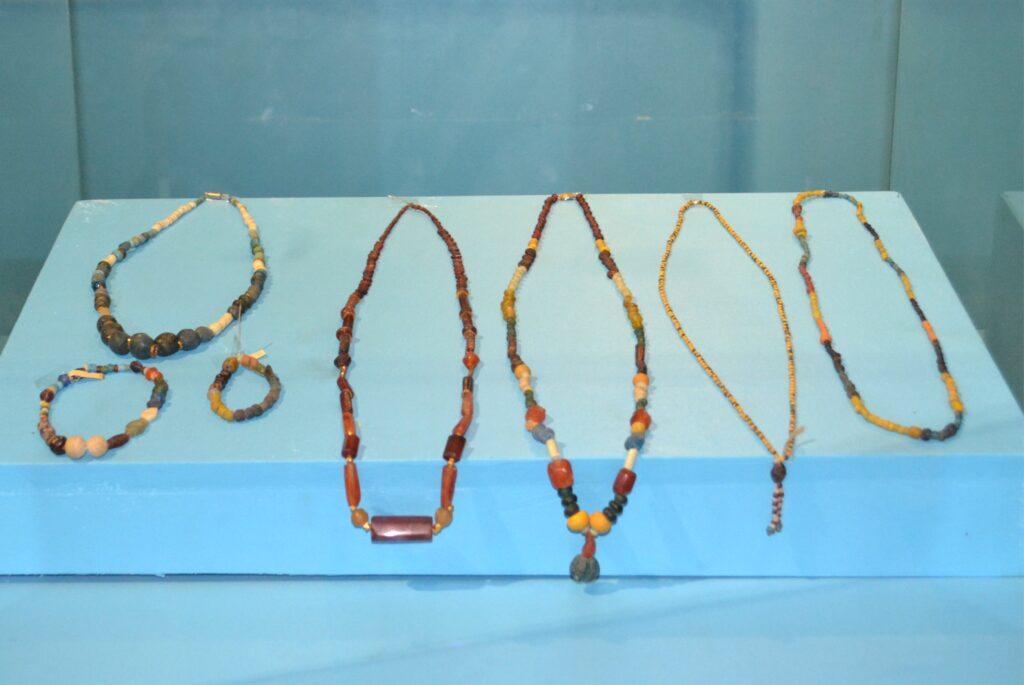
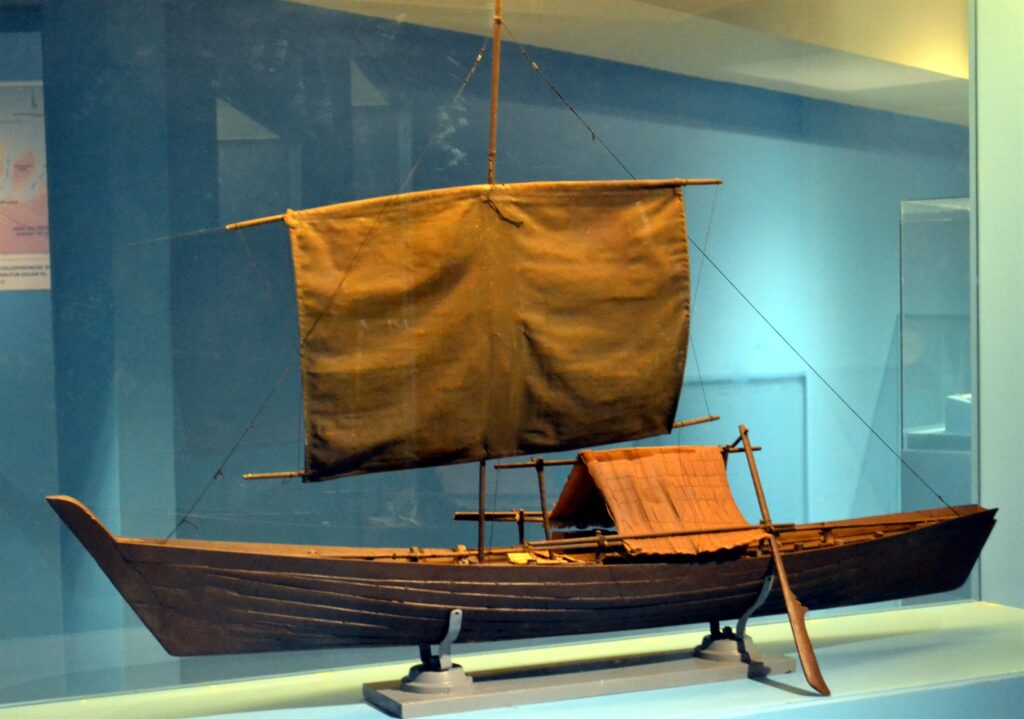
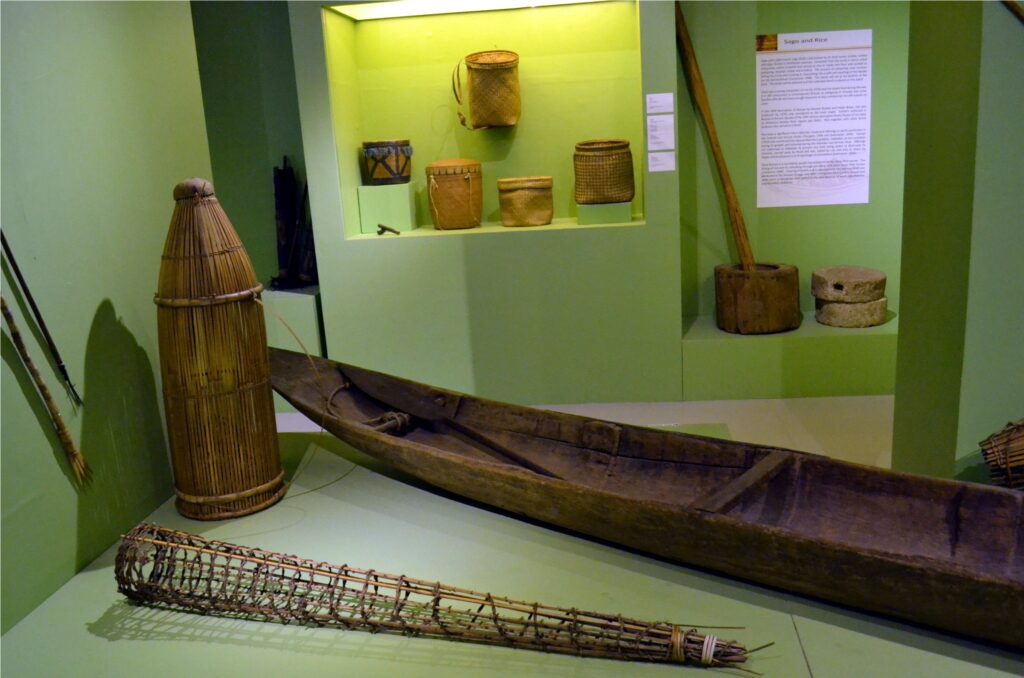
A formal archaeological excavation of the first Butuan boat was done in 1976. “They were built following the shell-first technique of putting the planks together with the use of wooden pegs,” the information displayed at the Butuan National Museum in barangay Doongan stated. “This technique is also known as the plank-built, edge-pegged method of boat building. Each boat is approximately 15 meters from prow to stern, and 3 meters across on its widest. The technique involves joining the fastening of the planks permanently by dowels, which are inserted through the holes on the sides of the planks.”
Two years ago, the largest sailing vessel of its kind was discovered and unearthed in Butuan City. “(The newly-discovered boat) will need more technical verification to establish its connection and relationship with the other boats already excavated, so that we can know its date, boat typology, and technology,” wrote Dr. Maria Bernadette L. Abrera, professor and chairperson of the Department of History at the University of the Philippines-Diliman, in an email to GMA News Online.
The discoveries of all these boats started when the waterways of the city were dredged in 1974. This led to the discovery of wooden coffins which contain human skeletal remains and associated burial goods.
An investigation in 1975 headed by the National Museum uncovered the burial site dating to the Ming Dynasty. “Wooden coffins with human remains, open burials of articulated and disarticulated remains, grave goods consisting of bowls, saucers, water droppers, parts of bows, shell bracelets, pottery, gold and copper ornaments were collected,” the information said.
“Large stoneware jars, celadon jars and blue and white plates were found on top or beside the coffins,” the information added. “Some coffins were also found close to posts that are narrower than regular house posts.”
The Butuan National Museum is the repository of historical and cultural materials and artifacts that proves Butuan’s prehistoric existence and rich cultural heritage. It houses two exhibit galleries. At the Archaeological Hall and Ethnological Hall, specimens of stone crafts, metal crafts, woodcrafts, potteries, goldsmith, burial coffins, and other archaeological diggings are exhibited. The Ethnological Hall displays contemporary cultural materials, the Butuanon or every Filipino for matter used for a living.
From the information displayed along with the exhibits, we found that the city’s early inhabitants were maritime people engaged in hunting, fishing, and agriculture as well as in the specialized production of pottery, metal and wood implements, and gold articles. “Settlements were along the river system and houses were built on stilts,” the information said.
Here is more historical information: “Prehistoric artifacts and protohistoric documents attest to the significant role of Butuan in a large-scale trade network involving Southeast Asian kingdoms like Champa and China not later than the 10th century.
“Apart from long-distance trading with other Southeast Asian kingdoms, Butuan also played a more significant role in local and short-distance trade with other nearby polities in Mindoro, Sulu, Maguindanao and Bohol. This continued even into the Spanish colonial period…”
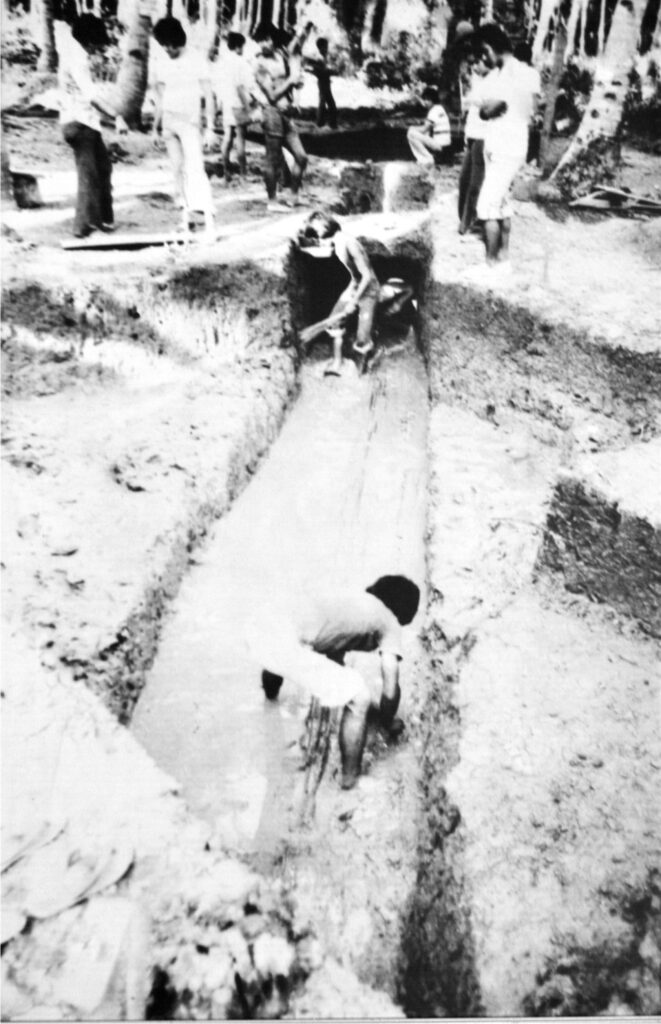

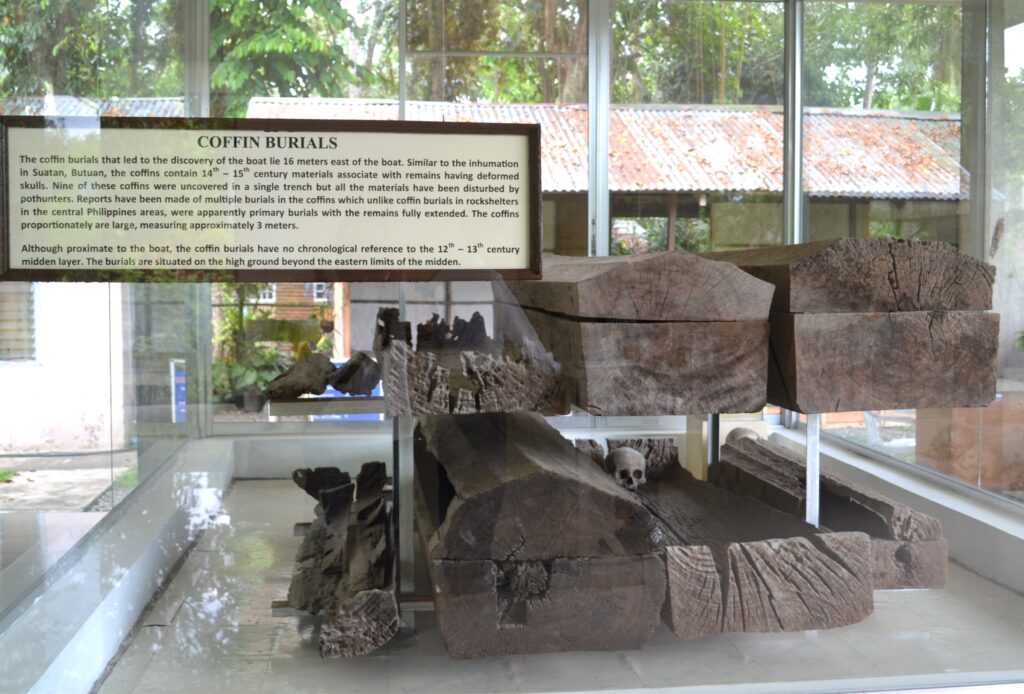

Indeed, Butuan will always be part of Philippine history. During World War II, Butuan was razed to the ground when local guerrilla forces attacked the enemy garrison during the middle of 1943. Two years later, the Philippine Commonwealth troops in Butuan together with the recognized guerrillas attacked the Japanese forces during the Battle of Agusan. Still recovering from the war, on October 20, 1948 the entire municipality was ruined by a fire.
The name “Butuan” is believed to have originated from the sour fruit locally called batuan. Other etymological sources say that it comes from a certain Datu Buntuan, a chieftain who once ruled over areas of the present-day city.
Butuan City can be reached by plane from Manila and Cebu. There is also a plane coming from Cagayan de Oro City, which is a four hour ride by bus. Another alternative is to fly to Davao City, a distance of about 220 kilometers from Butuan City and a six-hour trip by air-con bus.
Butuan has boat connections with various Visayan ports and Manila. Most ships go to the port of Nasipit, which is 18 kilometers west of Butuan City.

